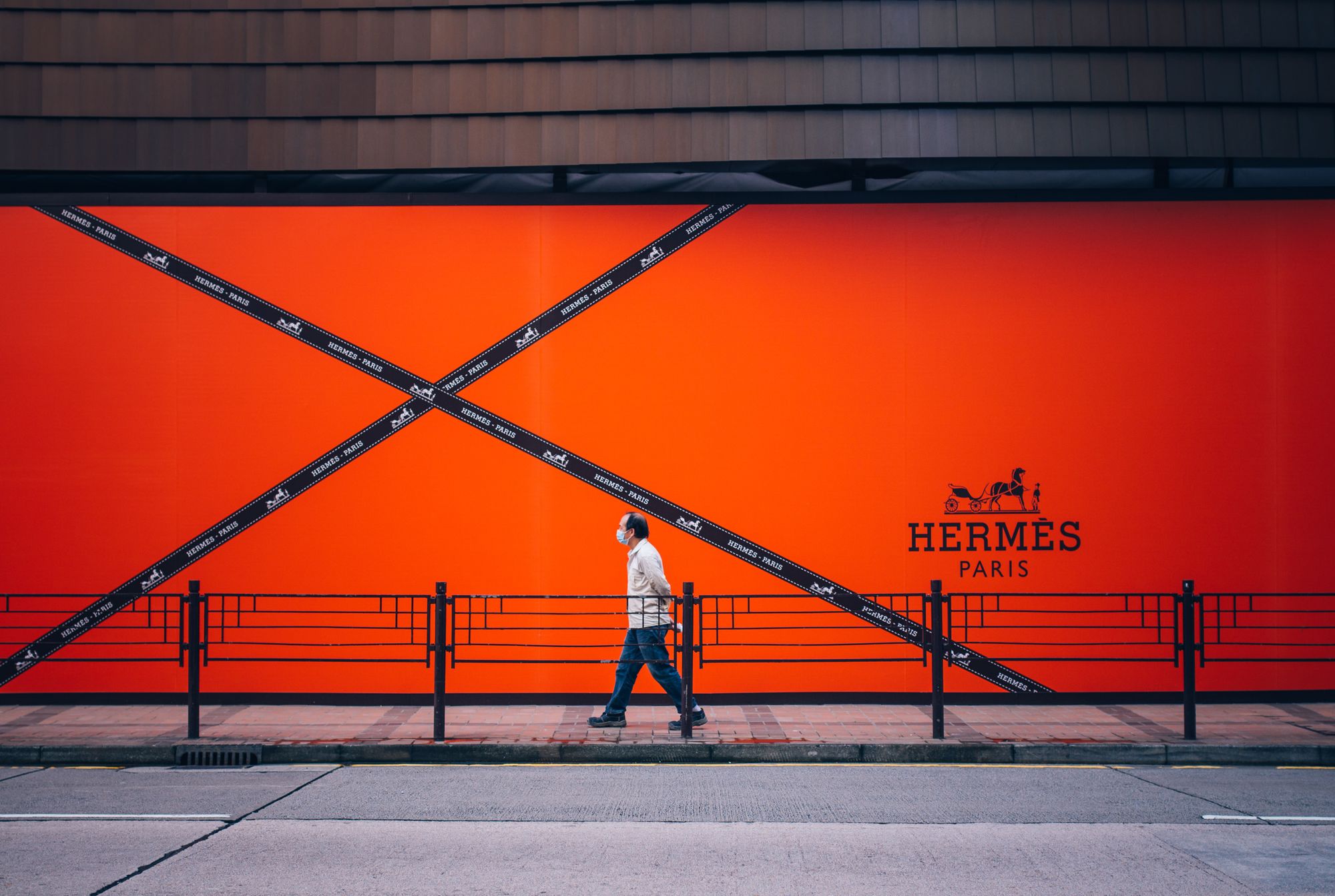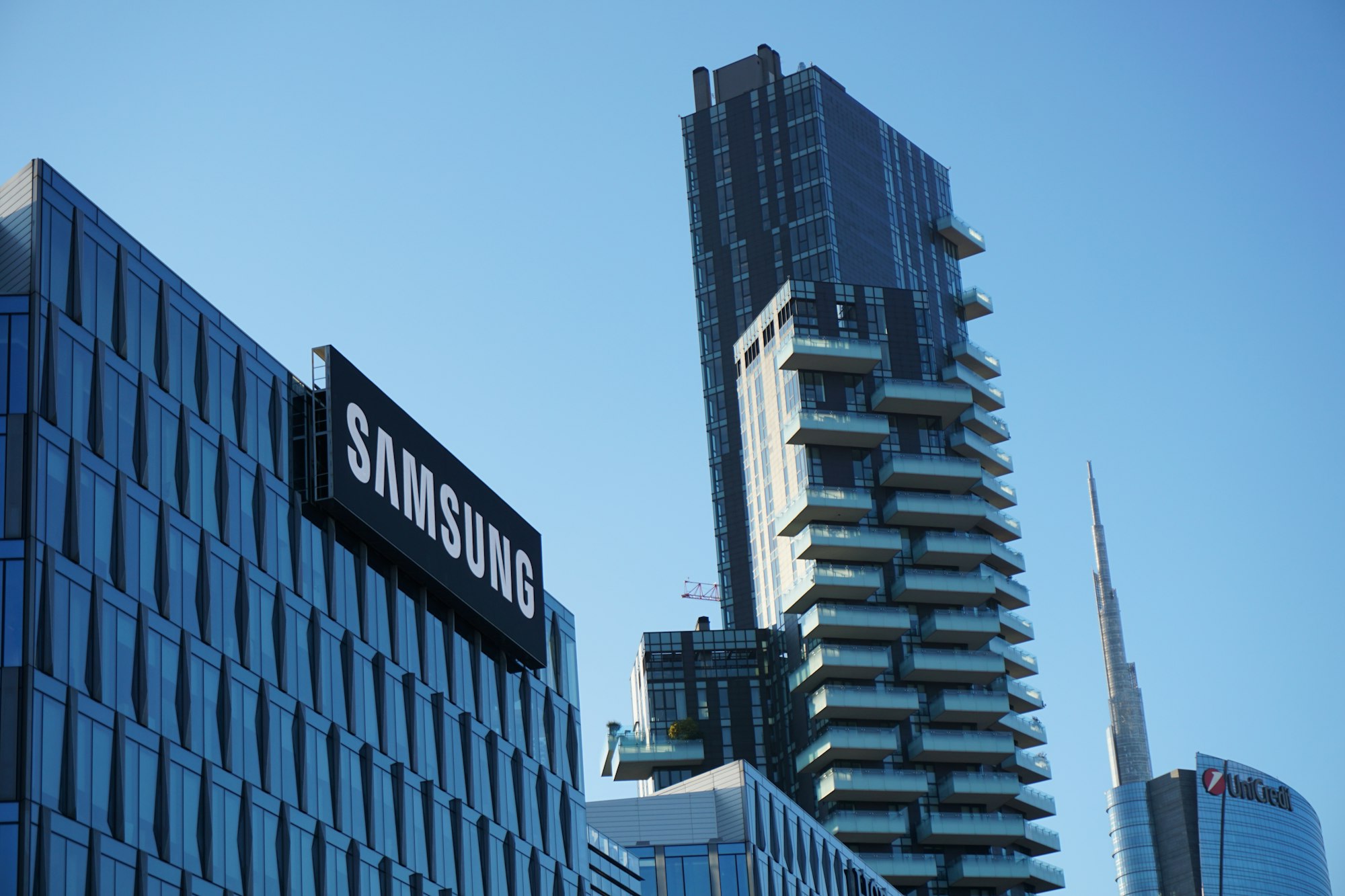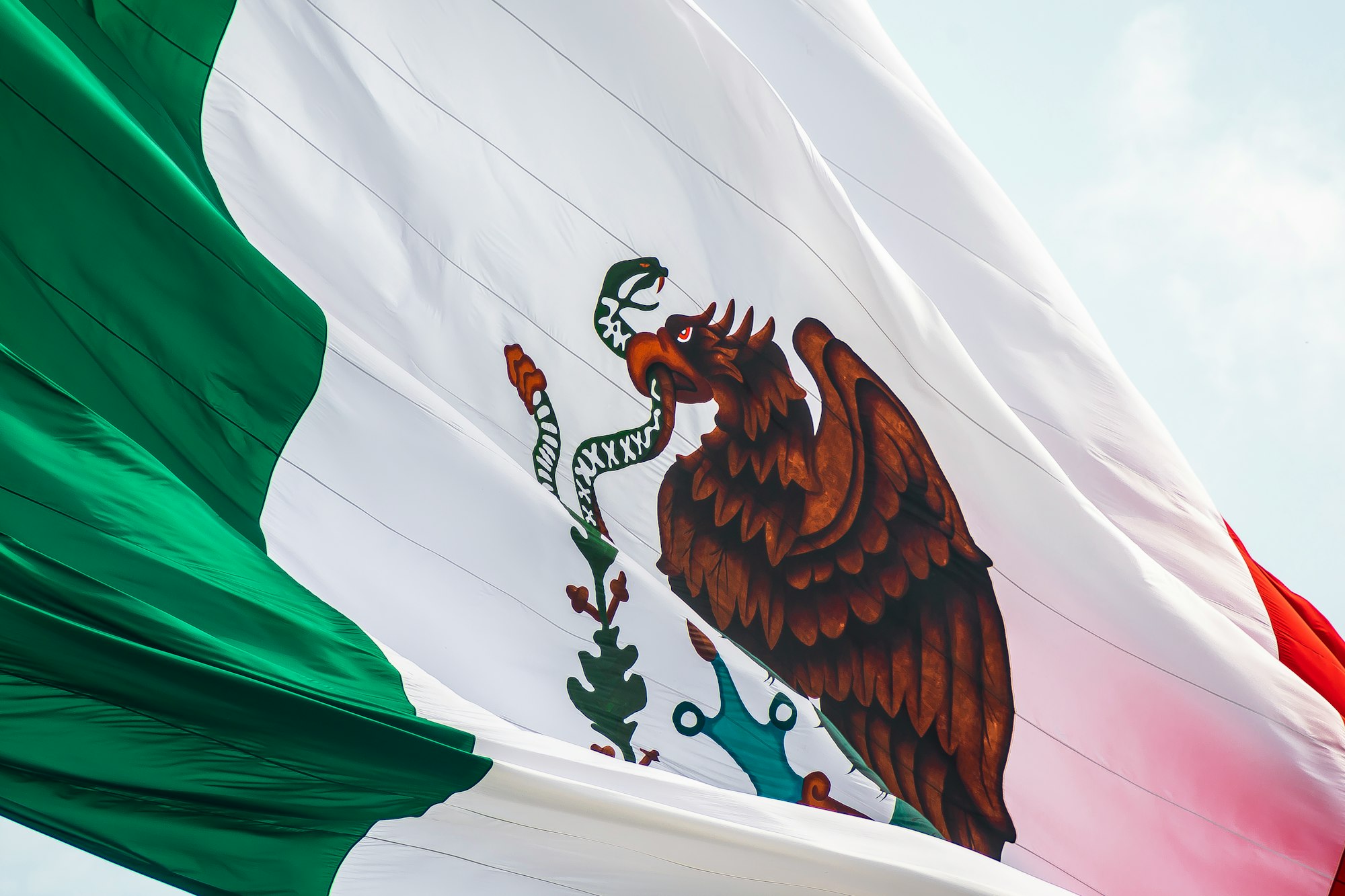Hermès International S.A., or just Hermès, is a premium fashion house based in France that was founded in 1837. Leather products, lifestyle accessories, home furnishings, fragrances, jewellery, watches, and ready-to-wear are among its specialties.
- It all started when Thierry Hermès established a harness workshop in the Grands Boulevards in Paris dedicated to serving European noblemen
- The company then moved to 24 rue du Faubourg Saint-Honoré where it remains to this day and started selling bags specially designed to carry on saddles
- In 1924, the company expanded to the United States
- Hermès introduced some of its most well-known original products during the 1930s, including the leather "Sac à dépêches" in 1935 (later nicknamed the "Kelly" purse after Grace Kelly) and the "Hermès carrés" (square scarves) in 1937

TIGHTLY VERTICALLY INTEGRATED
Hermès takes special care to secure its supplies of fabrics and materials in order to ensure the quality of its products. Vertical integration supports this as it enables the group to guarantee only high-quality materials and advanced production techniques are used during the manufacturing process. This also enables Hermès to unlock additional knowhow, through partnerships and acquisitions. More than 60% of its production is integrated and 80% of it is taking place in France. This vertical integration can be found all the way through the production chain, from supply to distribution.
- It has enabled the group to be adaptable in the face of the pandemic by keeping production local and by being able to change production levels and reallocate orders to certain geographical locations, allowing for better inventory management
- Its local suppliers and craftspeople work together to assure production continuity and, as a result, minimize delivery delays
Vertical integration and long-term connections with partners enable stringent supply chain traceability, tight supply control, and strengthen Hermès' responsible development plan in terms of materials, processes, and knowhow.
EXCLUSIVE DISTRIBUTION NETWORK
Hermès' exclusive distribution network consists mostly of group-owned branches focused on the Hermès brand. Each of the 306 stores around the world offers a customised assortment of objects in order to meet the unique needs of its consumers locally and provide a unique shopping experience.
- During the pandemic, Hermès also saw a large boost in online sales with a large number of new customers buying an Hermès product for the first time
“These are new customers, new customers who came to our online stores, so there wasn't any sort of cannibalisation. We see that our website in China continues to grow very strongly in second quarter despite of the fact all the Chinese stores have also reopened.” Hermès Executive Chairman Axel Dumas, 2020 Conference Call
- This is due to Hermès omni-channel sales strategy which views its online sales outlets as complimentary to its core-business according to Mario Ortelli, general partner at luxury advisers Ortelli & Co
“The big lesson that anyone can learn from Hermès, is that a brand that is probably considered to be one of the most exclusive and risk-averse in the luxury space, embraces the digital world and takes a great advantage from it. Hermes saw that digital was not something that would undermine its brand equity, but something that was a real platform to reach and reinforce their positioning among consumers.” Mario Ortelli
INDEPENDENCE
Hermès maintains its independence, backed by a strong family-owned shareholding structure. The company is also committed to keeping the majority of its production in France and preserving its knowhow in order to preserve its own brand guidelines and long-term vision.
- This independence, combined with the House's financial discipline, allowed it to maintain operating investments in 2020, both in production capacity and in network and cross-functional projects, to ensure the group's long-term success and value generation
- However, this independence was compromised in 2010 when Hermès' then-CEO Patrick Thomas discovered that LVMH had been surreptitiously accumulating Hermès shares over the years
- Through its companies, LVMH held 14.2% of Hermès by 2010. After converting some Hermès derivative instruments, the corporation would control 17.1% of the company
- In 2012, Hermès launched a lawsuit against LVMH for secretly amassing Hermès shares. LVMH apparently owned 22.6% of Hermès and had 16% of voting rights
- Finally, LVMH was fined in 2013 by French Market Authorities and LVMH agreed to distribute its 23.2% stake in Hermès to its shareholders and promised not acquire Hermès shares in the next five years
THE MARKET
The global luxury goods market is set to reach $ 403B by 2027, up from $ 349B in 2020. The market is driven by growing appetite for luxury in China as sales of luxury goods in the country are set to reach $ 184B by 2025 and account for 40% of the total market.
1. According to Bain & Company, China is set to become the leading consumer of luxury goods by 2025
“We anticipate this year’s growth to continue, putting the country on track to claim the biggest share of the market by 2025.”
Helped by the pandemic, the Chinese luxury market grew by 48% in 2020.
“Mainland China’s luxury goods market will likely achieve 48% growth in 2020, reaching nearly RMB 346 billion.”
“A decrease in global travel in the wake of the early Covid-19 lockdowns prompted Chinese consumers to turn to national sources for their luxury purchases, sending the domestic market climbing.”
2. According to McKinsey, Chinese spending on luxury goods will grow from $ 115B in 2018 (32% of total market) to $ 184B in 2025 (40% of total market)
- Driven by the relentless rise of streetwear as the respondents (located in Asia) of the Hypebeast and PwC 2019 Streetwear Impact Report reported spending five times more on streetwear per month than on non-streetwear
3. According to Research And Markets, the market for luxury goods is set to grow by a CAGR of 2.1% over the 2020 - 2027 period and reach $ 403B, up from $ 349B in 2020
- Driven by a surge in demand in China where the market is set to grow by 4% each year
FAMILY-LED
Hermès is lead by Alex Dumas, a sixth-generation member of the Hermès-Dumas family. He started his career as a banker for Paribas in China, France and the United States. He joined Hermès as an auditor in 2003 and succeeded Patrick Thomas as CEO in 2014.
- Succeeded Patrick Thomas as CEO of Hermès in 2014 after joining the company in 2003 as an auditor
- Worked for Paribas as a banker in Beijing, Paris and New York from 1995 to 2003. He joined the group in 2003 as an auditor and became the CEO of its jewellery division in 2006 and the CEO of its leather goods division in 2008
- Studied at Sciences Po in Paris and at Harvard University in the United States
- Artistic Executive Vice-President since 2011
- In 1992, Dumas joined Hermès at the family firm's headquarters in Paris, and then was involved with the development of new products by silversmiths Puiforcat and crystal manufacturer St. Louis, both Hermès acquisitions. In 2008, he took over the Hermès's public relations department
- In 1991, Dumas received a Bachelor of Arts degree in the visual arts from Brown University in the United States
TAKE A BREATH
So… This is a lot of information. Let’s summarise:
- Hermès is a premium fashion house based in France that was founded in 1837. Leather products, lifestyle accessories, home furnishings, fragrances, jewellery, watches, and ready-to-wear are among its specialties
- Hermès is lead by Alex Dumas, a sixth-generation member of the Hermès-Dumas family. He started his career as a banker for Paribas in China, France and the United States. He joined Hermès as an auditor in 2003 and succeeded Patrick Thomas as CEO in 2014
- Hermès takes special care to secure its supplies of fabrics and materials in order to ensure the quality of its products. Vertical integration supports the development plan in terms of materials, techniques, and knowhow, through partnerships and acquisitions
- Hermès maintains its independence, backed by a strong family-owned shareholding structure The company is also committed to keeping the majority of its production in France and preserving its knowhow in order to preserve its long-term vision
- Hermès' exclusive distribution network consists mostly of group-owned branches focused on the Hermès brand. Each of the 306 stores around the world offers a customised assortment of objects in order to meet the unique needs of its consumers locally and provide a unique shopping experience
- The global luxury goods market is set to reach $ 403B by 2027, up from $ 349B in 2020. The market is driven by growing appetite for luxury in China as sales of luxury goods in the country are set to reach $ 184B by 2025 and account for 40% of the total market
FINANCIAL CHECK
In 2021, the Group's consolidated revenue reached € 8,982 million, up 42% at constant exchange rates and 41% at current exchange rates compared to 2020. Over two years, this increase was 33% at constant exchange rates, in the first as in the second half of the year.
- Recurring operating income amounted to € 3,530 million, rising 78% from € 1,981 million in 2020. The recurring operating margin reached an historical high of 39% of sales, up 8 points compared to 2020 and 5 points compared to 2019
- Consolidated net profit (Group share) amounted to € 2,445 million (27% of sales), up 77% from € 1,385 at the end of December 2020
- Operating investments amounted to € 532 million. Thanks to the favourable impact of the change in working capital, the adjusted free cash flow reached a record-high € 2,661 million, i.e. 2.7 times that of 2020
- After distribution of the ordinary dividend (€ 476 million) and inclusion of shares redeemed (€ 162 million for 142,131 shares, excluding the liquidity contract), the restated net cash position increased by € 2,166 million to € 7,070 million.
THE BOTTOM LINE
The Good
- Hermès is a diversified luxury conglomerate with a strong presence in Europe, North America and Asia
- The luxury market is set to boom in China as wealth is being built up and consumers favour spending on luxury goods
- Hermès, as a consumer goods company, might offer an attractive hedge against inflation as it is able to pass on price increases to consumers
The Bad
- Spending on luxury goods might be restricted or increasingly taxed by local governments
- Geopolitical issues might impact Hermès' ability to operate in certain markets
THE STAKE
We have no position in Hermès yet. Hermès is a leading manufacturer of luxury goods. It survived its feud with LVMH and manages to grow its sales and profit on a consistant basis.
- We will start a stake if it manages to sustain its sales growth over time
- We will stop considering if it starts loosing its exclusive and high quality image
Disclaimer
Please note that this article does not constitute investment advice in any form. This article is not a research report and is not intended to serve as the basis for any investment decision. All investments involve risk and the past performance of a security or financial product does not guarantee future returns. Investors have to conduct their own research before conducting any transaction. There is always the risk of losing parts or all of your money when you invest in securities or other financial products.
Credits
Photo by Chi Lok TSANG on Unsplash.






